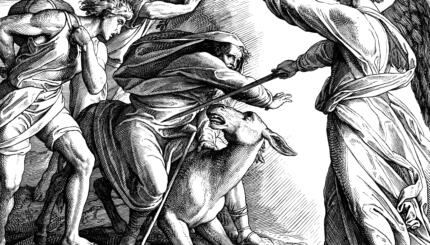In 1895, a 16-year-old immigrant named Lena Himmelstein arrived in New York, having traveled alone from her native Lithuania. Without family, she supported herself by working as a seamstress, earning a dollar a week. A gifted dressmaker, Lena quickly became skilled at her craft and within a year was earning the extraordinary wage of fifteen dollars per week. Before the age of 20, Lena married a Jewish immigrant jeweler from Russia named David Bryant. Soon after their son Raphael was born, David Bryant died suddenly. The widowed Lena Bryant, thrown back on her own devices, supported Raphael and herself by returning to dressmaking in their cramped apartment.
By 1904, Bryant’s business was so successful that she opened a shop with living quarters in the rear. A bank officer misspelled her name on a business account application, and Lena’s first name became Lane. Thus began the pioneering women’s clothing enterprise known as Lane Bryant.
Lane Bryant was an innovator, well ahead of her times as a designer and an entrepreneur. According to historian Louise Klaber, at the turn of the century, proper ladies who were pregnant were rarely, if ever, seen in public. When one of Bryant’s pregnant customers asked her to design something “presentable but comfortable” to wear on the street, Bryant created a dress with an elasticized waistband and an accordion-pleated skirt. She thus produced the first known commercial maternity dress. The garment liberated the increasing number of middle-class women who wanted to break with Victorian tradition. It also helped poorer pregnant women who had no choice but to go to work. The maternity dress soon became the best-selling item in Bryant’s shop.
In 1909, Bryant married Albert Malsin, who became her business partner. Lane Bryant Malsin continued as chief designer and Albert Malsin concentrated on the firm’s business operations. By 1911, Lane Bryant’s shop was grossing $50,000 per year. Its great potential was limited, however, because none of New York’s newspapers would accept advertising for maternity clothes. Tradition still dictated that such topics were not discussed in the press. It took the Malsins until 1911 to convince the New York Herald to accept an advertisement. When the paper finally did, Lane Bryant’s entire stock was sold out the next day. The company’s success was now assured.
To cope with newspaper discrimination against maternity clothes advertisements, the Malsins decided to create the first mail order catalog for maternity wear. By 1917, mail-order sales revenues for Lane Bryant, Inc. exceeded a million dollars. By 1950, the company’s mail order sales made it the sixth-largest mail order retailer in the United States.
Having succeeded in maternity wear and catalog sales, Lane Bryant Malsin’s next great innovation was ready-made clothing for the stout-figured woman. Before World War I, no mass manufacturer of women’s clothing addressed this market. After measuring some 4,500 women in her store and analyzing statistics gathered on some 200,000 others, Lane Bryant Malsin determined that there were three general types of stout women and she designed clothes to fit each type. By 1923, company sales had reached five million dollars and sales of full-figured clothing outstripped sales of maternity wear. In 1915, Lane Bryant opened its first retail store in Chicago, and by 1969 the chain had grown to more than 100 stores with combined sales of $200 million.
Lane Bryant Malsin pioneered in customer relations and corporate philanthropy. At her suggestion, Lane Bryant, Inc. worked with the Red Cross to replace any Lane Bryant customer’s wardrobe that was destroyed in a disaster. For example, in 1947 after a major explosion and fire in Texas City, Texas, the company re-outfitted 58 mail order customers whose homes were destroyed. After World War II, Lane Bryant stores became clothing donation centers to benefit displaced persons in Europe.
Lane Bryant, Inc. also pioneered in employee benefits at a time when few companies, particularly in the retail sector, offered meaningful employee support beyond wages. By 1950, the more than 3,500 Lane Bryant employees participated in profit sharing, pension, disability, group life insurance plans and fully reimbursed physician’s visits and hospitalizations. When the company went public, 25 per cent of the stock was reserved for employee subscription.
On a personal level, Lane Bryant Malsin took an active role in Jewish communal charity. She supported the Hebrew Immigrant Aid Society, the New York Federation of Jewish Philanthropies, and a number of other causes. When she died in 1951, her sons succeeded her in the business. In 1969, Lane Bryant, Inc. was purchased by another innovator in women’s retail clothing: the Limited, whose founder, Leslie Wexner, has also been deeply involved in American Jewish philanthropy. Lane Bryant Malsin would probably be pleased to know that her company and name are linked with another whose values fit so well with her own.
Chapters in American Jewish History are provided by the American Jewish Historical Society, collecting, preserving, fostering scholarship and providing access to the continuity of Jewish life in America for more than 350 years (and counting). Visit www.ajhs.org.


